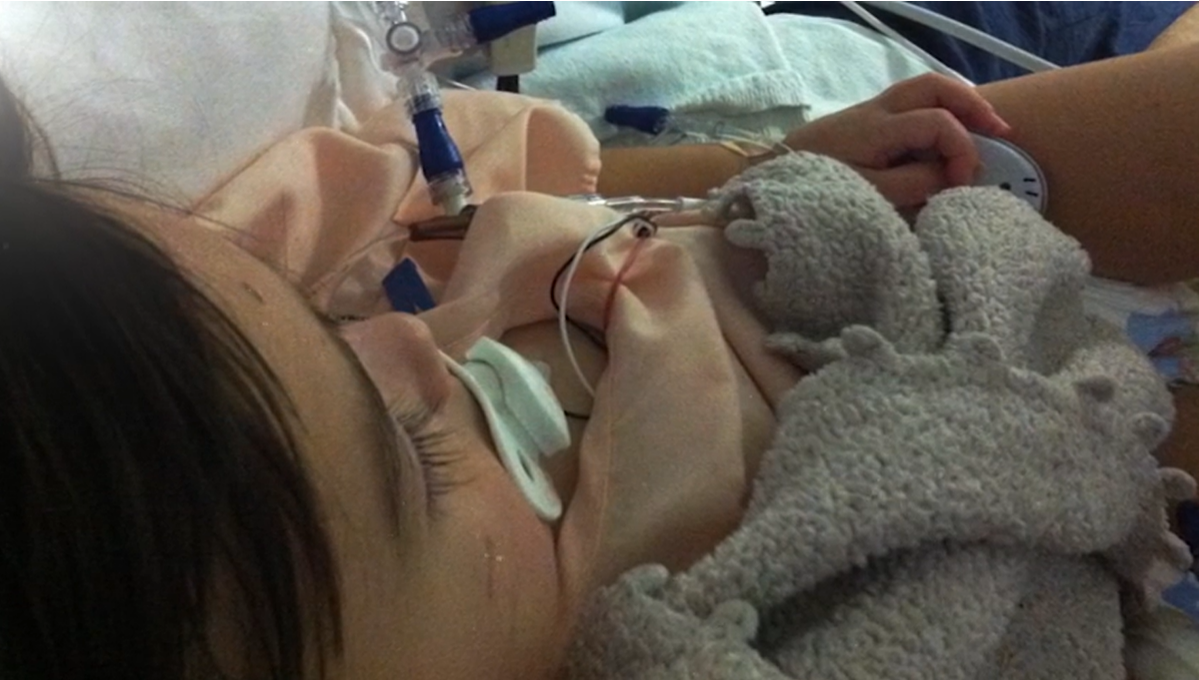The seizures gripped the nine-month-old baby boy as he slept.
In the beginning, the infant’s mother thought he was sick with a cold. But then he became feverish and developed diarrhea, along with a strange, bulging soft spot on his skull. According to a report in a recent issue of the New England Journal of Medicine, once the worried mother and her baby arrived at a hospital and doctors conducted a series of tests, she heard a diagnosis that had become vanishingly rare since the 1940s: her baby had rickets.
Rickets is a skeletal disease that most often results from a lack of vitamin D. In the baby’s case, the condition was most likely caused by breast-feeding. Mothers often do not pass enough vitamin D to their babies from breast milk, which is why most pediatricians suggest vitamin D supplements, especially for breast-fed infants.
However, the vitamin D story is much bigger than an unexpected case of rickets. Deficiency in vitamin D, a fat-soluble supplement needed to maintain normal levels of calcium and phosphorus in the blood, does appear to be a growing problem. Some medical experts even claim we are suffering through a vitamin D deficiency "crisis." As urban societies grow and we scramble to protect ourselves from the cancer-causing rays of the sun — the primary source of the nutrient— too few of us have optimal levels of vitamin D in our bodies, some doctors say. For example, cases of rickets, sometimes in adults, are on the rise in developed countries, according to a government report.
The vitamin D craze has been building over the last few years, with low levels of the supplement being the blamed as a source of many of our ills. Depression? D can ease it. Chronic pain? Take D. It is said to prevent kidney disease, diabetes, osteoporosis, colon and breast cancer, cardiovascular disease, or even the common cold. Recently, a study linked low vitamin D levels to the rise in Caesarean births.
Some studies, mainly epidemiological research that hunts for associations between diseases and possible causes, would seem to support that enthusiasm. For example, Cedric Garland, professor of family and preventive medicine at the University of California San Diego School of Medicine and colleagues, found that "the serum level associated with a 50 percent reduction in risk [for colon cancer] could be maintained by taking 2,000 international units of vitamin D3 daily." Garland believes the good news is being suppressed.
“We are curing cancer and diabetes and nobody is doing anything about it,” Garland said.
Health
Well, not quite. Partly through the agitation of evangelists like Garland, along with the efforts of the indoor tanning industry, the vitamin companies, and medical testing outfits, the message has been heard. Patients are now getting their vitamin D status tested at such a rate Quest Diagnostics, the world’s largest medical testing company, reports double digit sales growth of vitamin D tests, which can cost upwards of $200.
How much is enough?
Meanwhile, skeptics doubt many of the health claims and question the need and even the validity of widespread testing. They recall how large doses of vitamins C and E were supposed to prevent cardiovascular disease. Beta-carotene was supposed to prevent lung cancer. Selenium kept prostate cancer at bay. None of it turned out to be true, and some of the advice even proved harmful.
Vitamin D was discovered 87 years ago by team of scientists at Johns Hopkins University who cured mice with rickets by feeding them cod liver oil. Oily fish like sardines remain one of the few natural food sources of vitamin D.
It was later found that certain wavelengths of ultraviolet light prompt our bodies to synthesize vitamin D, eventually making a hormone called calcitriol that, among other things, controls how the body uses calcium and mineralizes bone.
Once this was understood, vitamin D was produced synthetically and foods, mainly milk, were fortified with it. An eight-ounce glass of milk contains about 100 International Units (IUs) of vitamin D.
By comparison, if you are Caucasian and expose 40 percent of your skin to midday summer sun in most of the United States, you will receive a dose of roughly 1,000 IUs per minute. The darker your skin, the less vitamin D you’ll receive from the sun. Anyone living north of about 35 degrees latitude — such as New York, Denver, Madrid (some high elevations excepted) — will receive none of the required wavelengths in midwinter.
Unlike most other nutrients, there is no “Recommended Daily Allowance” or RDA, for vitamin D. Instead, the Department of Agriculture uses a measure called “Adequate Intake Value” based on what’s needed to keep bones healthy. The adequate intake value for people up to age 50 has been set at 200 IUs per day, (a typical daily multivitamin pill contains 400 IUs), but most experts now agree that while this may prevent rickets, the amounts should be raised. Last year, for example, the American Academy of Pediatrics doubled its recommendation for children, including infants, to 400 IUs.
Even so, “we do not know where we want vitamin D to be,” said Rebecca Jackson, professor of medicine at Ohio State University and an expert in vitamin D and bone health. “We do not know what is an optimal level of vitamin D for good health.”
UV light debate
Garland thinks he knows. He and his brother Frank kicked off the debate in 1980 when they published data showing that people living in higher latitudes had a greater chance of dying of colon cancer. They suggested that vitamin D had a protective effect.
Intrigued researchers conducted more studies. The “sunshine vitamin” became linked to so many other conditions, recalled Boston University physician and vitamin D researcher Michael Holick, that “when I first heard [the claims] I thought it was kind of crazy. How can it be doing so many things?”
But Holick became convinced of vitamin D's effectiveness. “Heart, colon, prostate, brain, all those cells have receptors for vitamin D. We know it stimulates serotonin production [important in depression]. It is important for muscle function. It has a major role in keeping cell growth in check; it kills cells if they turn malignant.”
That was good news to the indoor tanning industry, which was being villified by doctors linking it to rising rates of melanoma. In 2003, the industry created a nonprofit outfit called the Ultraviolet Light Research and Educational Foundation to promote the idea that UV light doesn’t just give you a tan, it could save your life. The foundation declared February – a midwinter month when indoor tanning is most popular – “Vitamin D Deficiency Month.” Between 2004 and 2007, the foundation gave Holick, who has written a book called “The UV Advantage,” $188,904 to help finance his research.
Though Holick does not advocate tanning, and is “very aware and concerned that there is too much hype about D,” his embrace of UV exposure puts him at odds with most dermatologists.
“UV is a proven carcinogen,” said Dr. Barbara Gilchrest, chair-emeritus of the department of dermatology at Boston University Medical School. “The wavelengths of light that damage DNA and cause cancers are exactly the same ones that produce vitamin D in the skin.”
Holick and other proponents argue that humans evolved to get vitamin D from the sun and that scare tactics have convinced us to avoid it. Critics respond that hunter-gatherers didn't live as long as modern humans, so nature may well have traded abundant vitamin D and great bones early in life for skin cancer after years of DNA damage.
And at least one major study has contradicted the overheated claims of vitamin D advocates. In 2006, new results from the Women's Health Initiative, a huge federal study launched in the 1990s that focused on the benefits and risks of hormones for postmenopausal women, showed little benefit in participants who were given extra calcium and vitamin D. The supplements had no effect on colon cancer rates, cardiovascular disease, invasive breast cancer, and, most surprisingly, no effect on overall bone fractures (though it did strengthen hip bones), researchers found.
“We didn’t even show a blip,” said Jean Wactawski-Wende, Ph.D., associate chair of the department of social and preventive medicine at the State University of New York at Buffalo and lead author of the study that looked at colorectal cancer rates in the Women’s Health Initiative participants.
So, the argument continues. All sides do agree on one thing: more research is needed. Recently, the Institute of Medicine announced a panel to study all available data.
The panel may recommend higher intakes, but firm answers on the vitamin’s potential protective effects await long-term controlled trials that include many people.
'Give them all vitamin D'
Because there is no consensus on an optimal level of vitamin D, there is also no consensus on what most vitamin D tests really mean. There are also questions about the accuracy of some tests. For example, in January, Quest labs admitted inaccuracies in thousands of vitamin D deficiency tests. In addition, a 2007 study of young, Hawaiian skateboarders found that half tested below a “deficient” level, despite spending most of their days outdoors without sunscreen.
Nobody is sure how to interpret deficiency results. Since genes influence how vitamin D is made and used, maybe one person’s deficiency is another person’s healthy. Perhaps there is a limit to how much vitamin D the body will process into the active hormone.
Dr. Daniel Bikle, a vitamin D expert at the University of California San Francisco recalled a recent conversation with a health official from Newfoundland, a coastal Canadian province where it is assumed most people are deficient in vitamin D for at least part of the year. “He said the system was being bankrupted by everybody wanting to get their vitamin D measured. He said ‘Look, we know everybody is deficient. Let’s just give them all vitamin D and have at it.’”
The elderly, who gradually reduce their ability to absorb vitamin D, and those who have some secondary reason why they don’t, are good candidates for testing, Ohio State’s Jackson said. But if you aren’t in those groups, and you think you may not be getting enough D, you could simply take a supplement. Doses of up to 2,000 IUs daily have been deemed safe, though whether they will do any good remains to be seen.
“I am believer, but also a pragmatist," said Jackson. If somebody says ‘prove it, doc.’ I say ‘Eh, I can’t.’ ”
Brian Alexander is the author of the book “America Unzipped: In Search of Sex and Satisfaction," now in paperback.



